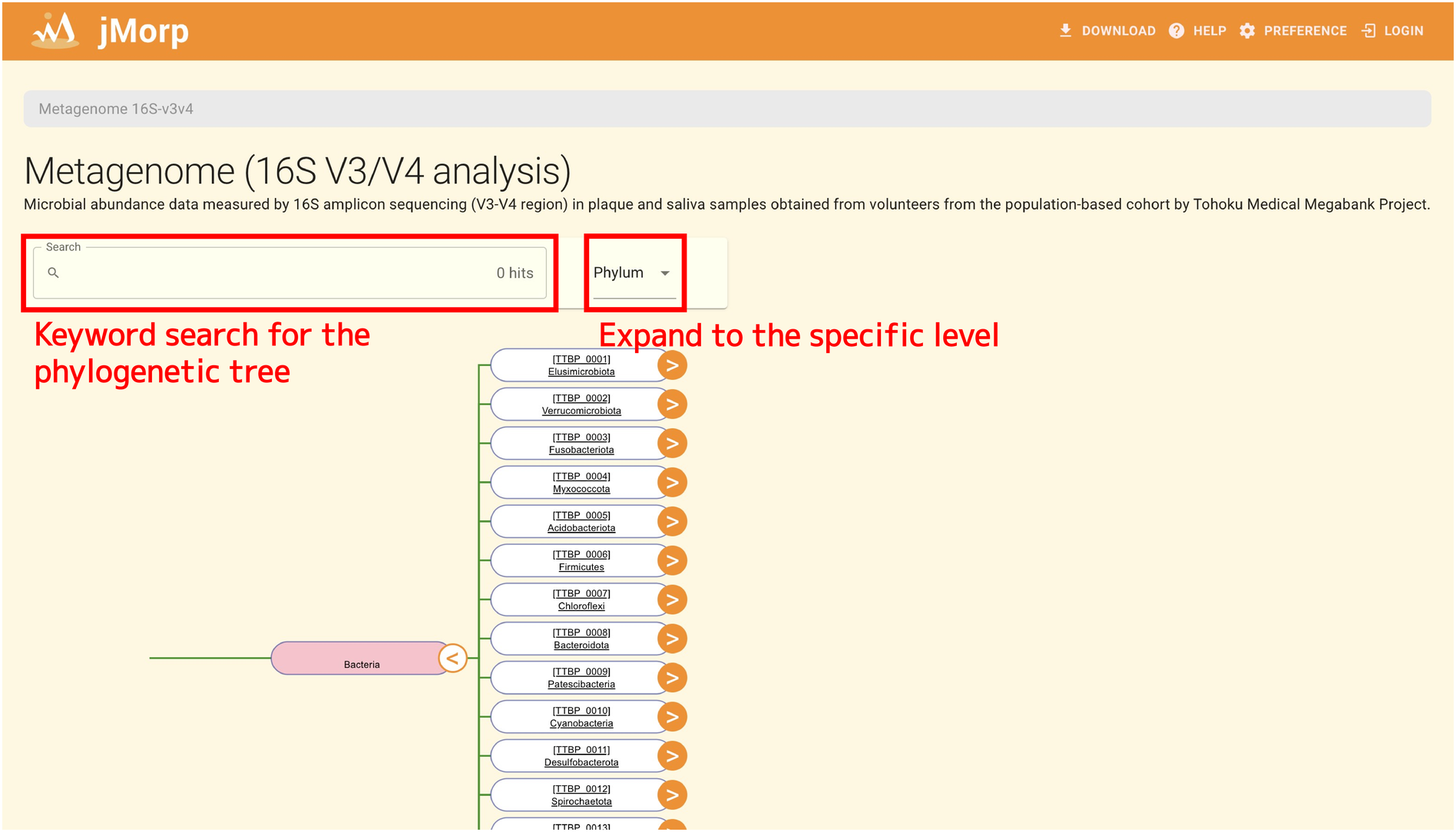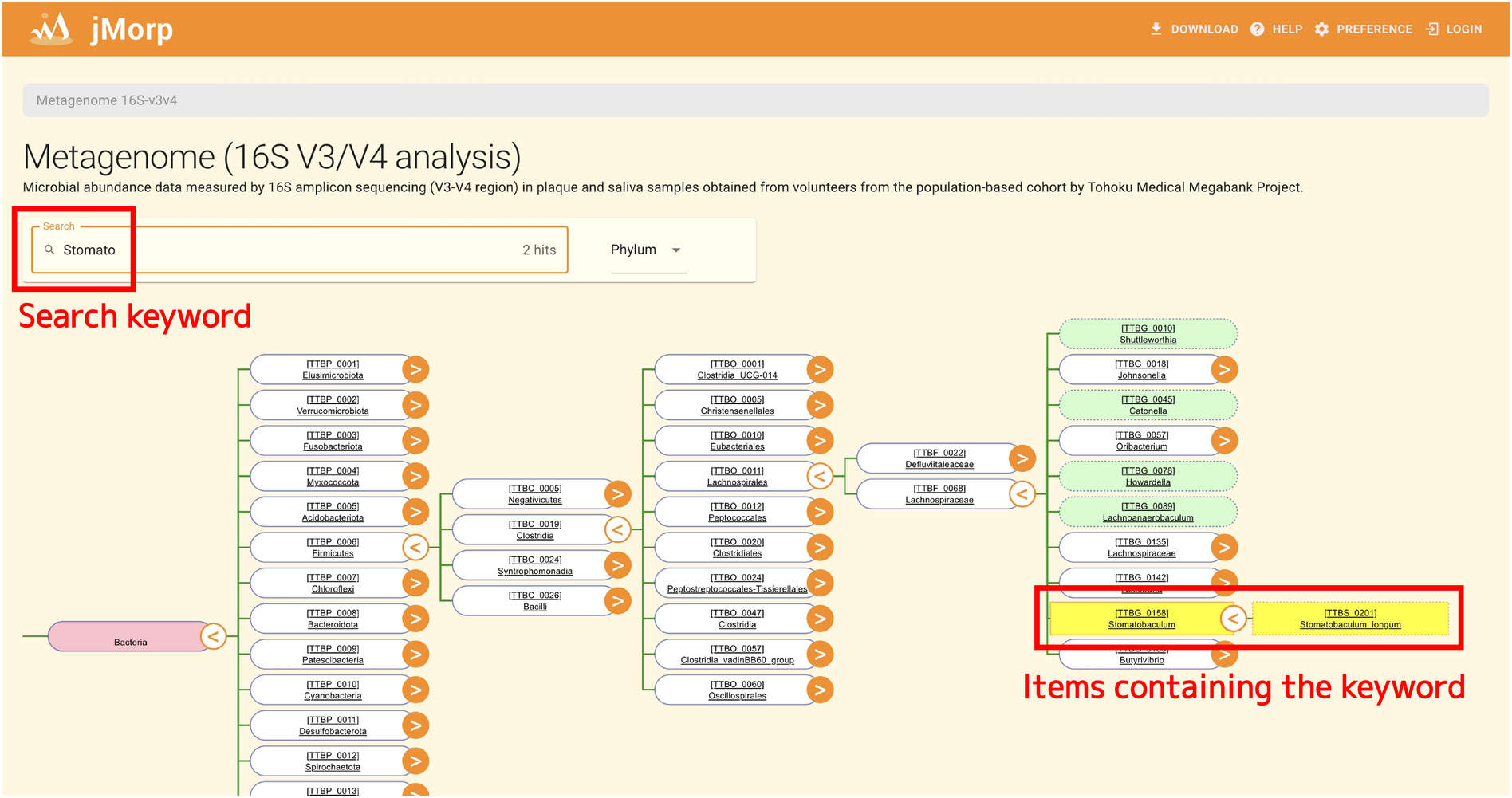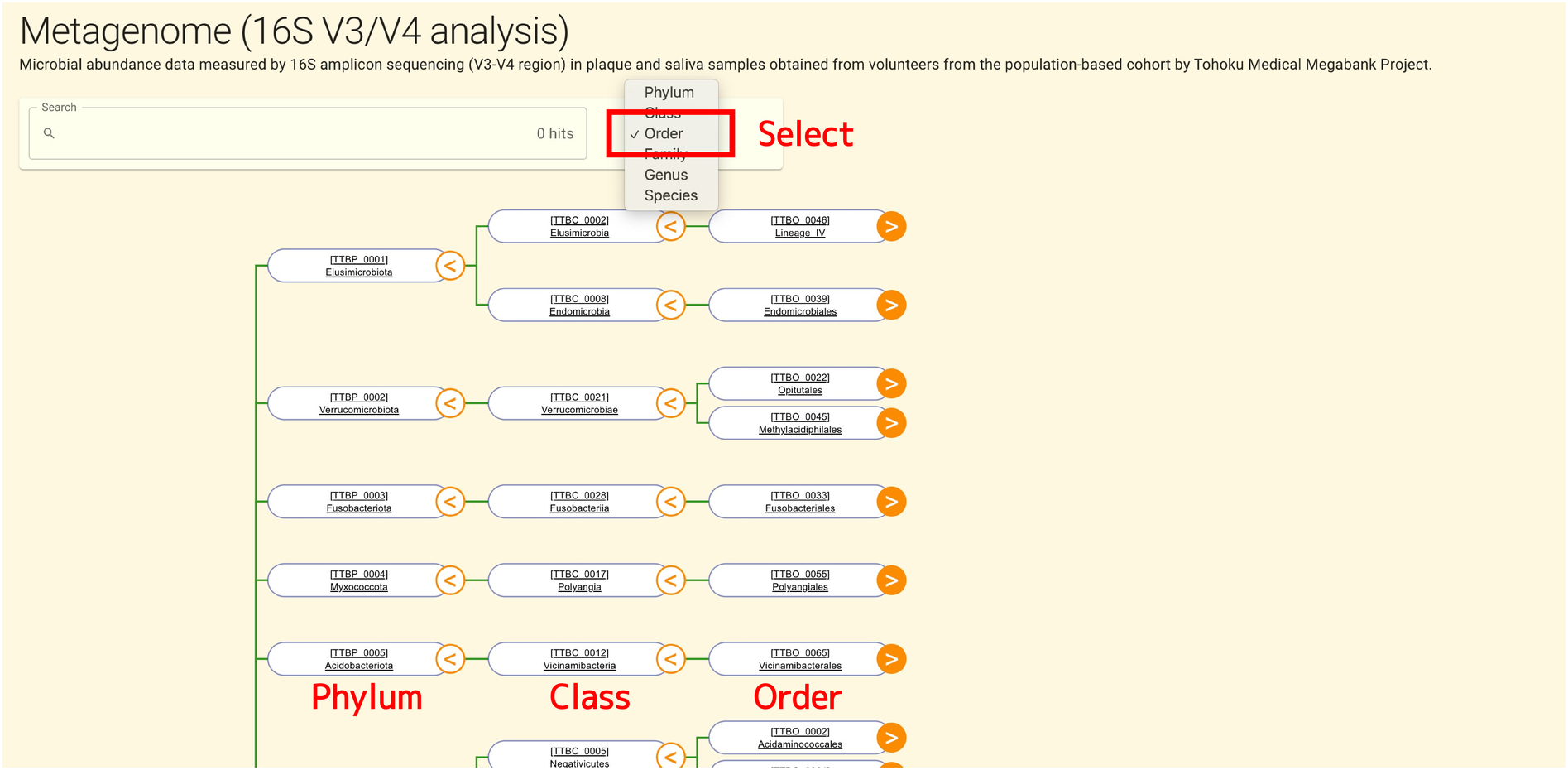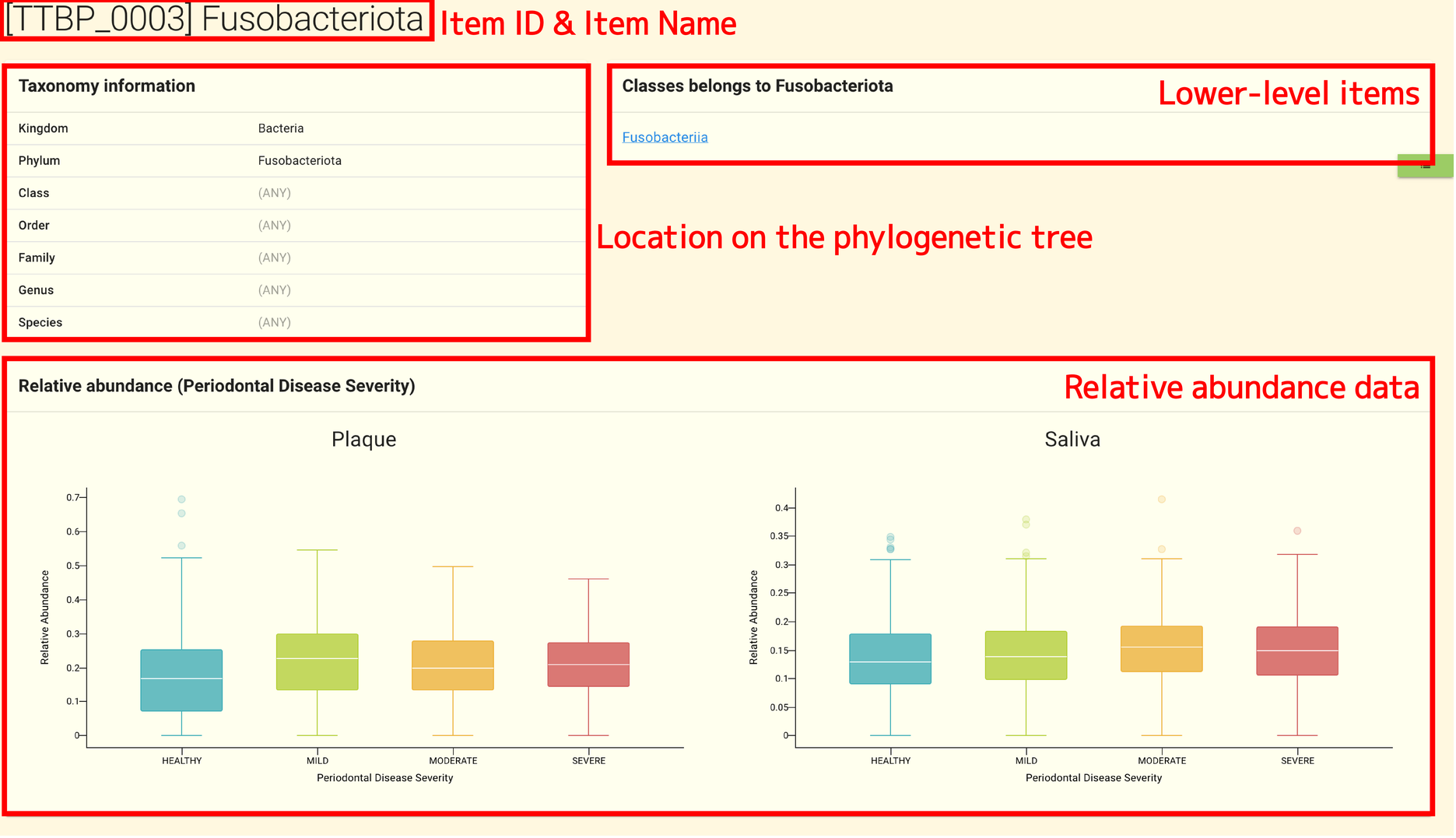2.12. Metagenome page
2.12.1. How to access
The Metagenome 16S-v4 2021 link, the Metagenome 16S-v3/v4 2022 link, Metagenome shotgun 2023 link can be found at the bottom right of the jMorp top page. jMorp now provides three metagenome datasets: the 16S v4 region analysis result, 16S v3/v4 region analysis result and shotgun analysis result. You can browse these datasets by clicking on the relevant links.
Additionally, a search by microbe name can be used to access metagenome datasets.

A page with a tree will appear when you click on the links in the bottom right corner of the top page.

The phylogenetic tree of the microbes in the metagenome dataset is represented by this tree. You can view the analysis data of each microbe and search the phylogenetic tree for the specific microbe you’re interested in. The search tools are provided above the phylogenetic tree.
2.12.2. Search
In the phylogenetic tree, you can perform keyword searches. On the right side of the search field, the number of results will be shown. The hit items will be highlighted and the phylogenetic tree will extend to include it. An example of a search using the keyword Stomato is shown in the following image.

2.12.3. Expansion to the specific level
You can select a certain level from the selector next to the search box if you simply want to expand to that level. In the image below, the tree has been expanded to ‘Order’.

2.12.4. Expand or collapse lower-level items
You can expand or collapse the items at the lower level for each item. The orange or white button located on the right side of each item can be used to achieve this.

The background will be green and the buttons to open/close the lower-level items won’t be shown if there are no items at the lower level.

2.12.5. Jump to a detail page
When you click on an item, you are directed to a page (referred to as the detail page) that details the analysis results for that specific item. Each item is highlighted in blue when you hover your cursor over it. Click the item name in this state ([TTBP 0003] Fusobacteriota in the example below).

2.12.6. Detail page
The following panels constitute the detail page.

On the detail page, the item names and IDs are shown at the top. Regarding the item IDs rule, please refer to each dataset’s details. (Metagenome 16S-v4, Metagenome 16S-v3/v4, and Metagenome shotgun)
Below that, you will see a panel with information on which Kingdom, Phylum, Class, Order, Family, Genus, or Species the item belongs to, and a panel to list the lower-level items.
Finally, metagenome analysis result data (relative abundance data) will be displayed. The contents of panels displayed in a detail page are depends on datasets selected. Each dataset contains the analysis data like below.
- Metagenome 16S-v4
Relative abundance of microbes for each {analysis sample (dental plaque and tongue debris)} x {severity of periodontal disease (Healty, Mild, Moderate, Severe)}.
- Metagenome 16S-v3/v4
Relative abundance of microbes for each {analysis sample (dental plaque and tongue debris)} x {severity of periodontal disease (Healty, Mild, Moderate, Severe)}.
Relative abundance of microbes for each {analysis sample (dental plaque and tongue debris)} x {sex} x {age (20s, 30s, 40s, 50s, 60s, 70s and older)}.
Relative abundance of microbes for each {analyzed sample (dental plaque and tongue debris)} x {smoking history (nonsmoker, past smoker, current smoker)}.
Relative abundance of microbes for each {analyzed sample (dental plaque and tongue debris)} x {respiratory function (FEV1% >= 0.7, FEV1% < 0.7)}.
- Metagenome shotgun
Relative abundance of microbes for each {analyzed sample (fecal sample)} x {sex (male, female)}.
Relative abundance of microbes for each {analyzed sample (fecal sample)} x {sex} x {age (20-30s, 40s, 50s, 60s, 70-80s)}.
Relative abundance of microbes for each {analyzed sample (fecal sample)} x {fecal condition (Bristol Scale; 7 levels)}.